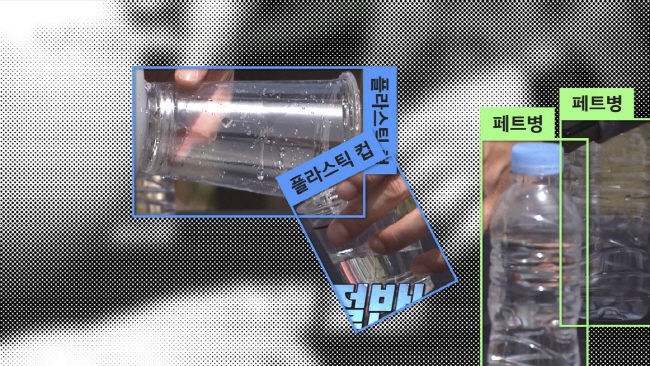
A recent investigation has revealed that more than half of South Korean entertainment programs excessively feature single-use plastic beverage containers.
The Greenpeace research team, led by Professor Yoon Ho-young from Ewha Womans University’s Department of Communication and Media Studies, published the report “Gather the Courage — An Analysis of Single-Use Plastic in Entertainment Programs Analyzed by AI” focusing on the exposure of single-use plastic beverage containers on major broadcast networks (KBS, MBC, SBS).
The analysis found that among 19 entertainment programs, over 80% of the beverage containers featured were single-use plastic. It also noted a similar distribution in the exposure of plastic cups, glass cups, paper cups, and ceramic cups on screen. This indicates that single-use containers are indiscriminately showcased on broadcasts, suggesting that they could be sufficiently replaced with reusable options.
Situations in which single-use beverage containers were used included: • Cases where single-use plastic beverage containers are shown for mission-related activities within entertainment content • Instances where there are no policies regarding the exposure of single-use plastic beverage containers during filming or editing • Cases where single-use plastic beverage containers are displayed to promote a specific brand.
Programs like KBS2’s “2 Days & 1 Night” were cited as instances where single-use plastic beverage containers appeared due to mission-related activities in entertainment content. Although the overall exposure rate of single-use plastic beverage containers was relatively low in broadcasts, they were frequently used during the mission execution phases by participants. Talk shows featuring panelists, such as SBS’s “Same Bed, Different Dreams 2” and KBS2’s “Immortal Songs,” also exhibited long-duration exposures of specific brands for advertising purposes.
MBC’s “It’s Okay to Not Be Okay” was noted as a positive example, having intentionally excluded plastics. This program, which features survival scenarios on a deserted island, had very few scenes involving meals or beverage consumption, and exposure to single-use containers was minimal apart from stainless steel cups.
Greenpeace utilized AI technology to analyze the types and ratios of beverage containers appearing on broadcasts. They also conducted a visual heatmap analysis to see frequently occurring locations of beverage containers on screen. The research included 562 episodes from 21 entertainment programs that ranked within the top 100 ratings of the three broadcasting networks.
Kim Na-ra, a plastic campaigner from Greenpeace, said, “The results of this study show how indiscriminately single-use plastics are exposed in the media. The media industry must recognize its potential to influence public perception and take the lead in reducing the exposure of single-use plastics while promoting a culture of reusable containers. Furthermore, companies and the government should also implement policies and systems to reduce plastic usage and establish fundamental solutions to plastic pollution.”
Since 2020, Greenpeace has been running the ‘Gather the Courage’ campaign, encouraging a shift from single-use culture and plastic pollution through the use of reusable containers. ‘Gather the Courage’ carries a dual meaning of requesting reusable containers when packaging at restaurants or cafes and having the courage to implement such practices.
Lee Sang-jin daedusj@autodiary.kr

